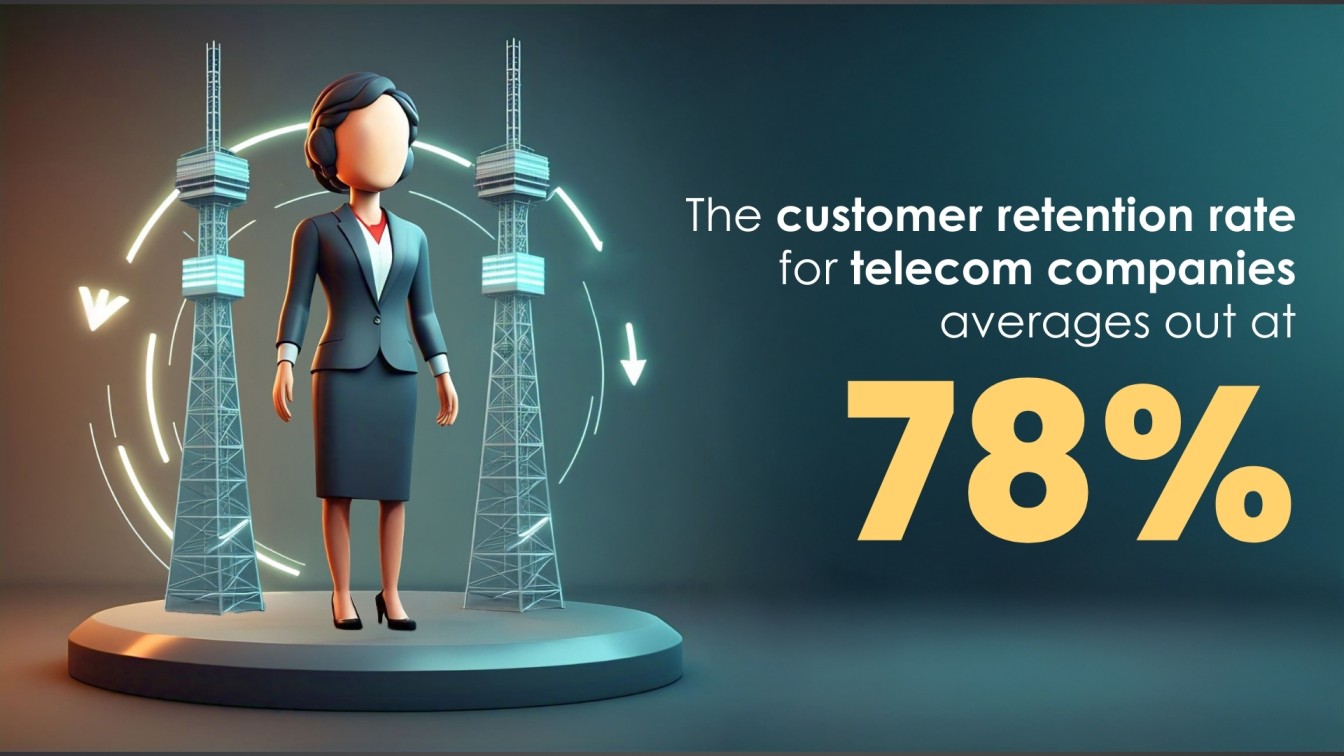Introduction
Previously, landlines, twisted cables, and delays were the things that symbolized telecom. Now, the telecom industry has entered its maximum potential phase with digitization. Communication and connection have achieved new magnitude with the onset of 5-G, omnichannel, and AI-enabled networks. Also, the requirement for smart, fast, and dependable communication is highest today, and digitization is the need of the hour.
According to Mordor Intelligence report US Telecom Market Size & Share Analysis – Growth Trends & Forecasts (2025 – 2030), growing at a compound annual growth rate (CAGR) of 3.67%, the U.S. telecom market is expected to grow to $530.61 billion by 2029 from $443.12 billion in 2024.
From cords to cordless marvels
The evolution from traditional infrastructure to cloud-based networks, AI-prompted customer service, and real-time data analytics has transformed telecom providers into tech hustlers. Let’s discuss how digitization is a game changer.
1. 5G: The Backbone of the Digital Revolution
United States is expected to have a 5G adoption of 68% by the end of 2025.
Gone are the days when video buffering and call drops were a thing. The US telecom industry is now equipped with high-speed connectivity, IoT intelligence, and prompt replies, all thanks to 5G. As we are in the age of the digital economy, 5G plays a humongous role in connecting smart cities’ communication systems or streamlining high-speed remote work.
2. AI and Automation: Smarter, Not Harder
New-age tech solutions such as chatbots, virtual assistants, and AI-driven analytics have played a significant role in making the telecom sector faster, intelligent, competent, and hyper-personalized. Network issues are resolved even before hampering the work with the help of predictive maintenance. AI customer assistance makes troubleshooting convenient and swift for the customers, and automation helps companies save money and also makes the user experience smooth.
As per Gartner’s report, Three Technologies That Will Transform Customer Service and Support By 2028, around 80% of customer service and support organizations are anticipated to embrace generative AI to boost agent productivity and customer experience by 2025.
3. Cloud-Powered Networks: The End of Legacy Limitations
Telecom’s obsolete physical infrastructure is being taken over by Cloud computing. This new technology makes it easier to install new services quickly, scale operations, and improve cyber security.
This is evident from the fact that according to a recent report from Juniper Research Global Telecommunications Cloud Strategies Market: 2024-2028, telecommunications operators invested $26.6 billion into cloud services in 2024, with spending reaching $64.9 billion in 2028.
The Network-as-a-Service (NaaS) model enables companies to faster innovations and also streamlines increasing connectivity demands.
4. The Rise of Edge Computing
Today data generation is at its fastest pace. In such a situation, its edge computing that assists telecom processing power in bringing users nearer. This results in reduced interruptions, enhanced security, and boosted sustenance for IoT applications like autonomous automobiles, manufacturing automation, and smart homes.
5. Omnichannel CX: Meeting Customers Where They Are
In a customer focussed world where customer expectations are constantly rising. Efficient round-the-clock customer experiences are delivered by the telecom companies by deploying AI chat bots, digital self-service portals and social media support. The by-product? Prompter resolutions, happier customers, and more robust brand loyalty.

Source: Omnichannel marketing statistics
Why It Matters
We need to understand that now the US telecom sector is not just limited to calls and data. Its ambit is increased to provide more effective, smarter, and closely linked digital experiences. With the rise in the adoption of digitization, the telecom companies that will get hold of cloud-driven solutions and AI and automation will be market leaders, beating their competitors.

The Future: More Tech, More Connectivity
We are living in a world that is much more tech-influenced than before. With inventions like 5G, quantum networking, and AI-powered cybersecurity the telecom sector is moving towards a landscape where connectivity is instinctive, swifter, and impeccably integrated into every facet of our lives.
However, this fact cannot be ignored that Telecom sector is not just adopting technology it is also a propelling force behind digital revolution. And this guarantees a future with boundless potential with tech powered connectivity for both businesses and consumers.
Read More – 5 Reasons Personalisation in UK Telecom is More Relevant Than Ever
Sources:
US Telecom Market Size & Share Analysis – Growth Trends & Forecasts (2025 – 2030)
Gartner reveals Three Technologies That Will Transform Customer Service and Support By 2028
Global Telecommunicaions Cloud Strategies Market: 2024-2028




